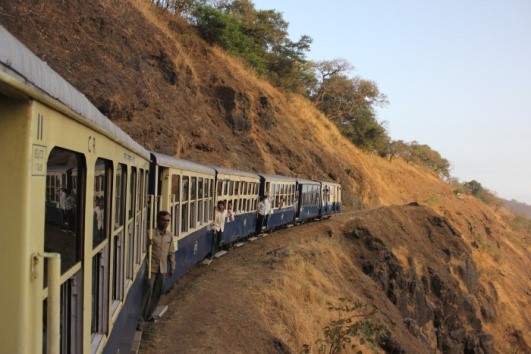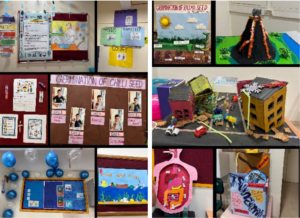Several people on the Hills made money, but few donated to the development of the city and for welfare of its citizens. Three eminent merchants gifted for posterity and future generations heritage that need salutations.
Sir Cowasji Jehangir Readymoney (1812 – 1878)
His great-grandfather emigrated from Navsari to Bombay along with his two brothers. They struggled and worked hard to establish trade with China. However, young Cowasji opted to make it on his own.
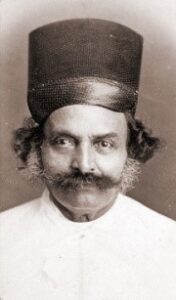
At age the tender age of 15 years Cowasji joined Duncan Gibb & Co. as a ‘godown keeper’ (warehouse clerk). His meticulous efforts were greatly appreciated and he was soon promoted to ‘guarantee broker’ to two leading European firms in Bombay.He had learned many skills from his experiences and thus in 1846, started trading on his own. His acumen & honesty were recognised by the East India Company. He was made Justice of Peace (JP) and appointed as Commissioner of Income Tax in 1866. In 1872 he was knighted and a statue was installed in the Town Hall. Sir CowasjiJehangir was always ready to assist the poor and the needy, regardless of their religion or community. He leant money to all and thus earned the title of ‘Readymoney’, which was later added to his name.
The assistance spread further to ‘gifts’ to the city.
- The magnificent Cowasji Jehangir Convocation Hall for the University of Bombay, designed by Sir Gilbert Scott.
Sir Cowasji Jehangir’s marble statue in the forefront was erected by public contribution in 1873, in gratitude for his munificence.
- Elphinstone College to encourage education for all, which has a medallion above the main entrance to recognise his fundin


- Cowasji Jehangir Hall, which today has been remodelled as the National Gallery for Modern Art (NGMA).
- 40 drinking water fountains to the city.
- Collection of Oriental Works & coins to the Asiatic Society of Bombay.
- One of the founders of the Botanical Gardens (Jijamata Udyan) & the Victoria & Albert Museum (now Bhau Daji Lad Museum).
He built a 1,20,000 sq. ft. large house on Nepean Sea Road, just below the Baroda Palace, for his family. It had verdant lawns, view of the sea, many flowering plants & trees. Unfortunately it met the same fate as other large houses, and in 1970 gave way to multiple-flat structures, Swapnalok&Kshitij.

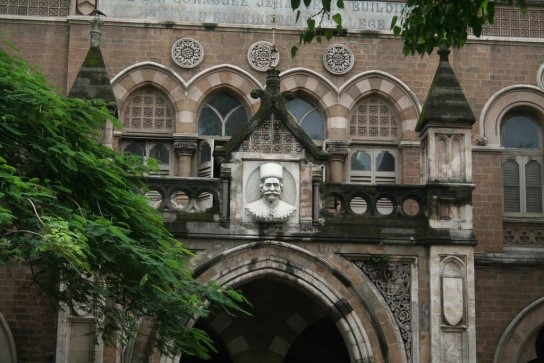
PremchandRoychand (1831-1906)
Premchand Roychand was very young when his family moved from Surat to Bombay. Son of a devout Jain merchant in timber, he came to be known as the ‘Cotton King’ & ‘Bullion King’. He was educated in the Elphinstone Institution and started life as an assistant with Ratanchand Lala, a successful share broker. Soon thereafter he started trading on his own and is considered to be‘the first Indian sharebroker who could speak, read & write English. His name was entered in the List of Stock Brokers in 1849, and went on to be one of the founding members of the Native Stock Brokers’ Association (Bombay Stock Exchange today). Premchand Roychand’s primary interest was trading in cotton and bullion, but it expanded to private banking. He established the Bank of Bombay, which became the main bank for cotton & bullion trade.
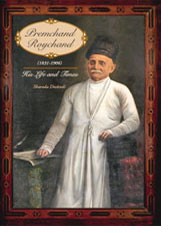
- His fortunes grew, but so also his generosity. He donated to numerous causes without seeking any recognition for the same. Education for girls was of primary interest and he donated generously towards this aim. In Surat he established a girls school called ‘Roychand Dipchand Girls School.’
- His multiple contributions to the students and University in Calcutta (Kolkata) was recognised by the institution of a ‘Premchand Roychand Award’.
· In Mumbai his magnificent gifts to the University of Bombay in 1864.
1. A large sum ‘towards the erectionof a university library to be a storehouseof the learned works, not only of the past but of many generations to come, may be the means of promoting the high ends of the University’.
2. Further amount a year later to erect the Rajabai Clock Tower, to be named in memory of his mother, who was going blind and would be able to keep time ‘with chimes that could be heard many miles away’. Today this clock continues to keep time for the city.



Premchand Roychand lived in a luxurious villa he named ‘Premodayan’ (today Regina Pacis orphanage & school for girls) in Mazgaon, but one of his son’s moved to a bungalow on Narayan Dabholkar Road. Next few generations continue to live on the Hills.
Sir AdamjeePeerbhoy (1846-1913)
Born to a very poor Dawoodi Bohra family in Kathyiwar, he came to Bombay at the age of 13 years to seek his fortune, and startedas a street vendor selling matches. He had no roof over his head and slept on the footpaths in the Fort area. His is one of the ‘rags to riches stories’, being helped by two individuals, a Hindu & an Englishman, Seth Lukmanji& Lt. Smith. Seth Lukmanjioffered him a place to stay and in return, not wanting to available of any free services, Adamjee offered to paint his house. Lukmanji was so pleased with the painting work that he recommended it to Lt. Smith. Smith gave him his bungalow to paint – and from there on the story began!
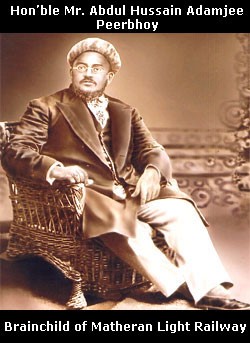
Lt. Smith got Adamjee large Government contracts for painting, and later for manufacturing military tents and boots. Adamjee established several factories and the largest tannery in Asia, the Western Indian Tanneries. He manufactured thousands of tents and shoes, and at one point employed over 15,000 workers in the cotton mills to weave the canvas cloth for the tents.
He also made khaki uniforms for the British soldiers during the 2nd Boer War, and in appreciation of his invaluable services to the Crown (which had taken charge of India from the East India Company after the Indian Mutiny in1857), Adamjee was appointed as the 1st Indian Sheriff of Bombay & Justice of Peace in 1897.
In 1900Adamjee was honoured by the people with the title of ‘Quaisare-Hind’, and knighted in 1907. Thoughilliterate, he was honoured by the Mohammedan Educational Conference to be its first president and the 49thSyedna Mohammed Burhanuddin conferred him with the title of ‘Rafiuddin’ in the Bohra community.
Adamjee always remembered his humble beginnings and supported various causes
- Distributed free food to drought affected in Kathyiwar in 1877.
- Built 27 schools in Gujerat & Bombay.
- Built an orphanage for Bohras in Kathyiwar in 1885.
- Donated to build the Prince of Wales Science Institute for the Aligarh University.
- Bought land at Charni Road and started the huge Adamjee Peerbhoy Sanatarium for visitors to the city. Later some wings were converted into the present-day Saifee Hospital.
- Assisted to develop Matheran as a small hill station & introduced the mini train that still chugs up the hills.
At the age of 20 years, Adamjee had enough money to buy himself a bungalow on Malabar Hill, and called it ‘Peerbhoy Mansion’. Today we recognise it as ‘Saifee Mahal’
